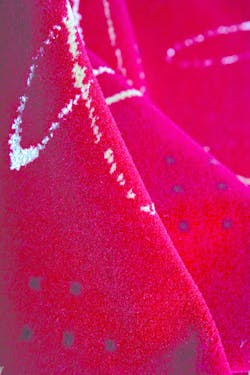World famous transportation fabric specialist Holdsworth is at the forefront of environmental design and can assist in ‘greening’ vehicle interiors through the choice of textile upholstery and the way in which fabrics are made.
What a fabric is made of affects not just its appearance but also its environmental profile. There are two broad splits between natural and man-made fibers. Natural fibers are grown, not made, and include cotton, bast fibers from plants such as nettles, hemp and flax, as well as the most well known natural fiber pure new wool. Man-made synthetics are finite petrochemical derivatives such as polyester, polypropylene, polyacrylic and nylon.
The Holdsworth design team constantly strive to improve the environmental advantage of fabrics through their composition by using high wool content, renewable fibers and cotton backings. Holdsworth standard moquette fabrics are made from a wool-nylon face with an interwoven cotton backing with the end fabric containing 90 percent natural fibers by weight. Both wool and cotton claim sound environmental properties in terms of rapid renewability and low energy and CO2 footprints.
The latest Elements Collection is a new generation of wool rich designs available in 125 different design and color permutations. The company is also making lighter weight wool moquettes and flat woven fabrics to save raw materials weight on the finished seat while maintaining technical performance.
In terms of manufacturing practices, Holdsworth is part of the Camira Group accredited to the international environmental management standard ISO 14001. The company carries out the entire production process to ensure full environmental control, as well as enabling better service and quality performance. Yarn dyeing is undertaken in a state of the art dyeing facility, whilst warping, winding, dobby and jacquard weaving, and all finishing are then carried out just a couple of miles away at Holdsworth’s 210,000 square feet manufacturing plant. Manufacturing is supported by a raft of environmental initiatives including comprehensive waste streaming for re-use and recycling; energy management and intelligent lighting systems; and natural surface water for steam finishing.




